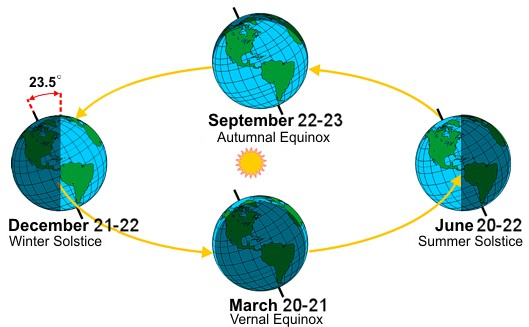Blog

#bioPGH Blog: Sunsets and Solstice
 A resource of Biophilia: Pittsburgh, #bioPGH is a weekly blog and social media series that aims to encourage both children and adults to reconnect with nature and enjoy what each of our distinctive seasons has to offer.
A resource of Biophilia: Pittsburgh, #bioPGH is a weekly blog and social media series that aims to encourage both children and adults to reconnect with nature and enjoy what each of our distinctive seasons has to offer.
The shortest day of the year is coming up early next week! On December 21, the sunrise will feel incomprehensibly late at 7:39 a.m., and it will set at 4:56 p.m., which means Pittsburgh will only see nine hours, sixteen minutes, and fifty-seven seconds of daylight. It’s the winter solstice! Let’s take a deeper dive into the day, beyond the shortened sunlight!
We call it a “solstice” when the Earth is angled at its most northerly or southerly position during its orbit around the sun. If you’ll recall from our chat about the spring equinox, our seasons on Earth are the result of the planet’s tilt on its rotational axis. As we travel around the sun, the Earth is tilted 23.5 degrees. What exactly does this mean? Well, picture that an imaginary line runs from top to bottom through the center of the Earth, connecting our North and South Pole. Now, imagine that this pole-pole line is perpendicular to the Earth’s path in its orbit around the sun — this would be our planet with no axial tilt. However, our tilted axis means that our imaginary line connecting the north and south poles is angled by 23.5 degrees.

Photo credit: National Weather Service
Now that we have the Earth’s tilt in mind, we can look more closely at the solstice. As the Earth progresses in its elliptical orbit around the sun (and remember, the complete orbit takes one year!), this axial tilt keeps the Northern Hemisphere closer to the sun than the Southern Hemisphere for part of the year, and farther from the sun the rest of the year. On December 21, at approximately 11 a.m. this year, the Northern Hemisphere will be at its farthest possible angle away from the sun, kicking off winter and giving us the shortest amount of daylight for the year. And the reverse is true for the Southern Hemisphere, as they are as close as possible to the sun. (The solstice is at slightly different days and times each year because it technically takes our planet 365.24 days to orbit the sun.) We both mark this as the official change in seasons. Our days in the Northern Hemisphere will grow longer and in the Southern Hemisphere, days will grow shorter.
Funnily enough, though, you may have noticed that sunset has actually been a few minutes later than it was last week. From roughly December 3-11, sunset was at 4:53 p.m.; but on this year’s solstice, the sun will set at 4:58 p.m.
If we take a step back and think about it, that little tilt of the planet has a pretty big impact! It drives our seasons, our daily amount of sunlight, our circadian rhythms, and many other things related to those concepts. It’s no wonder that cultures and civilizations from around the world and across history have faithfully observed the solstices and equinoxes. These events were followed a by a change in season that would have a tremendous impact on the experience and even survivability of the days ahead! Today, we in Pittsburgh can note the solstice without the same concern for winter’s harshness that our great-great ancestors may have had, but it’s still important to watch the skies and understand our natural world. We’re all a part of it!
Connecting to the Outdoors Tip: If you want to get the blood flowing on the darkest day of the year, when we’re all tempted to stay snuggled up in bed, try some of these animal yoga poses for gentle stretching and movement.
Continue the Conversation: Share your nature discoveries with our community by posting to Twitter and Instagram with hashtag #bioPGH, and R.S.V.P. to attend our next Biophilia: Pittsburgh meeting.
Photo Credits: Header and cover, Pixabay CC0; planet image, National Weather Service, public domain

